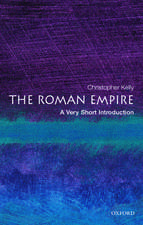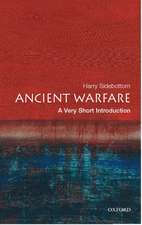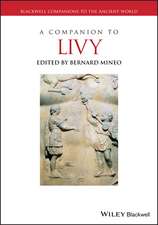Byzantium and the Turks in the Thirteenth Century: Oxford Studies in Byzantium
Autor Dimitri Korobeinikoven Limba Engleză Hardback – 25 sep 2014
Din seria Oxford Studies in Byzantium
- 34%
 Preț: 780.13 lei
Preț: 780.13 lei - 13%
 Preț: 533.06 lei
Preț: 533.06 lei - 17%
 Preț: 581.96 lei
Preț: 581.96 lei - 17%
 Preț: 581.72 lei
Preț: 581.72 lei - 19%
 Preț: 498.92 lei
Preț: 498.92 lei - 18%
 Preț: 573.25 lei
Preț: 573.25 lei - 30%
 Preț: 604.56 lei
Preț: 604.56 lei - 30%
 Preț: 542.02 lei
Preț: 542.02 lei - 30%
 Preț: 807.02 lei
Preț: 807.02 lei - 30%
 Preț: 1233.39 lei
Preț: 1233.39 lei - 30%
 Preț: 1099.29 lei
Preț: 1099.29 lei - 34%
 Preț: 1202.96 lei
Preț: 1202.96 lei - 34%
 Preț: 1127.39 lei
Preț: 1127.39 lei - 34%
 Preț: 997.67 lei
Preț: 997.67 lei - 34%
 Preț: 879.34 lei
Preț: 879.34 lei - 34%
 Preț: 759.52 lei
Preț: 759.52 lei - 27%
 Preț: 864.53 lei
Preț: 864.53 lei - 30%
 Preț: 615.10 lei
Preț: 615.10 lei - 30%
 Preț: 662.93 lei
Preț: 662.93 lei - 30%
 Preț: 926.16 lei
Preț: 926.16 lei - 30%
 Preț: 617.16 lei
Preț: 617.16 lei - 30%
 Preț: 588.33 lei
Preț: 588.33 lei - 30%
 Preț: 707.58 lei
Preț: 707.58 lei - 30%
 Preț: 791.87 lei
Preț: 791.87 lei - 30%
 Preț: 736.88 lei
Preț: 736.88 lei - 30%
 Preț: 817.86 lei
Preț: 817.86 lei - 30%
 Preț: 701.54 lei
Preț: 701.54 lei - 12%
 Preț: 202.22 lei
Preț: 202.22 lei - 25%
 Preț: 584.15 lei
Preț: 584.15 lei - 26%
 Preț: 761.21 lei
Preț: 761.21 lei - 25%
 Preț: 578.04 lei
Preț: 578.04 lei - 16%
 Preț: 705.52 lei
Preț: 705.52 lei - 30%
 Preț: 604.14 lei
Preț: 604.14 lei - 33%
 Preț: 866.92 lei
Preț: 866.92 lei
Preț: 880.01 lei
Preț vechi: 1200.02 lei
-27% Nou
Puncte Express: 1320
Preț estimativ în valută:
168.41€ • 175.17$ • 139.03£
168.41€ • 175.17$ • 139.03£
Carte tipărită la comandă
Livrare economică 03-09 aprilie
Preluare comenzi: 021 569.72.76
Specificații
ISBN-13: 9780198708261
ISBN-10: 0198708262
Pagini: 396
Ilustrații: 14 half-tones, 1 map, and 1 table
Dimensiuni: 162 x 240 x 29 mm
Greutate: 0.74 kg
Editura: Oxford University Press
Colecția OUP Oxford
Seria Oxford Studies in Byzantium
Locul publicării:Oxford, United Kingdom
ISBN-10: 0198708262
Pagini: 396
Ilustrații: 14 half-tones, 1 map, and 1 table
Dimensiuni: 162 x 240 x 29 mm
Greutate: 0.74 kg
Editura: Oxford University Press
Colecția OUP Oxford
Seria Oxford Studies in Byzantium
Locul publicării:Oxford, United Kingdom
Recenzii
This is an excellent contribution to the study of the thirteenth century, and the field will wait expectantly for the next volume, in which Korobeinikov has promised to expand his analysis into the fifteenth century.
Dimitri Korobeinikov has undertaken the challenge to look at Byzantine-Turkish relations in the thirteenth century as a whole. He has ardently filtered through all of the information provided by the sources in Persian, as well as utilized the well-known chronicle of Ibn Bibi ... He merits praise for not limiting his study to the years between 1204 and 1261, the key dates for the Latin Empire ... [a] stimulating book
Byzantium and the Turks in the Thirteenth Century is a major new contribution to a question of great historical importance. As the most thorough and in-depth discussion of the triangle of Byzantine-Seljuk-Mongol relations in the thirteenth century, it is indispensable reading for any historian interested in the collapse of Byzantium and the emergence of Turkish power.
Dimitri Korobeinikov has undertaken the challenge to look at Byzantine-Turkish relations in the thirteenth century as a whole. He has ardently filtered through all of the information provided by the sources in Persian, as well as utilized the well-known chronicle of Ibn Bibi ... He merits praise for not limiting his study to the years between 1204 and 1261, the key dates for the Latin Empire ... [a] stimulating book
Byzantium and the Turks in the Thirteenth Century is a major new contribution to a question of great historical importance. As the most thorough and in-depth discussion of the triangle of Byzantine-Seljuk-Mongol relations in the thirteenth century, it is indispensable reading for any historian interested in the collapse of Byzantium and the emergence of Turkish power.
Notă biografică
Dimitri Korobeinikov is Assistant Professor at the University at Albany SUNY, and a Senior Research Fellow in the Centre for Byzantine Studies, Institute of World History, Russian Academy of Sciences. He was Senior Research Fellow in the Research Center for Anatolian Civilizations, University of Koç, Istanbul, in 2013; Fellow in Dumbarton Oaks, 2006-2007; and Junior Research Fellow in Wolfson College (Oxford).












